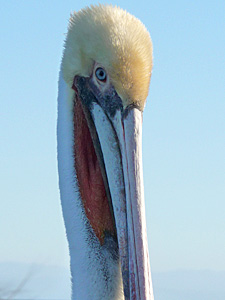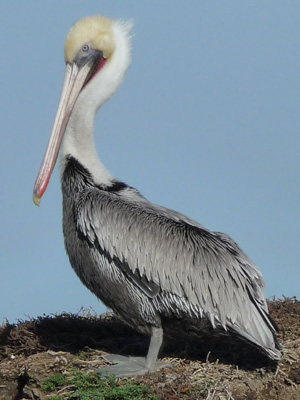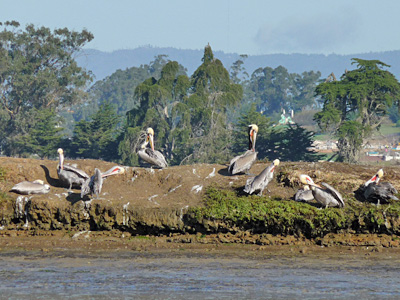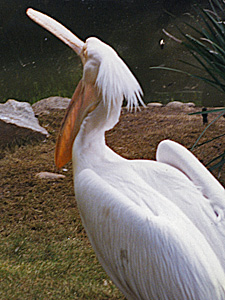
Brown Pelicans
Pelecanus occidentalis
Our coastal friends, the brown pelicans, can tell both a cautionary and an inspirational tale. These gawky, but oddly charming birds have been a common site in coastal waters for centuries, but between the 1940's and 1960's their population plummeted. In 1970, in one of the only California breeding colonies on West Anacopa Island, the once abundant Pelecanus clan made a mere 552 nesting attemps--and only one chick survived! The Texas population was estimated at fewer than 100 birds. Scientists determined that the pesticide DDT, which flowed through sewers into the ocean, was the cause of their precipitous decline. Their friends feared that Pelecanus occidentalis was going to be the poster child of how quickly and easily a widespread species could be driven to extinction.
Luckily, they became symbols of a miraculous recovery instead. Once DDT was banned, they began to recover. Steady population growth from the 1980s on led to their removal from the U.S. Endangered Species list in 2009. Currently, more than 4,000 pairs nest on West Anacopa Island per year. Like the other species described here, they have a perilously small genetic pool, so they are more vulnerable to disease and climate change than species that haven't been subjected to severe population problems. But their return to a stable population definitely makes Grus Grin!
Where Can You Find Them?


Brown pelicans are marine birds, famous for their spectacular fishing aerobatics. They plunge head first into the water for their prey from up to 70 feet in the air. They are very social birds, so they are often seen in groups, called pods.
The smaller, western branch of the family (Pelecanus occidentalis californicus) has a breeding range that extends south from California's Channel Islands to Chile. When they aren't fussing over chicks, they migrate north as far as Vancouver, Canada.
Their more common Eastern relatives (Pelecanus occidentalis carolinensis) live along the Gulf of Mexico and Atlantic coasts from Maryland to Venezuela.
Pelicans are Odd Birds!


Pelicans are very unusual. They are extremely clumsy walkers because the webbing on their feet connects all of their toes, even the back one. They make up for this in the water; they're very powerful swimmers. Undoubtedly, however, their most unique feature is the pouch at the bottom of their hooked beak. They use this pouch for as a fishing net. A brown pelican's pouch can hold more than two gallons of water. Because it is heavily vasculated, they also can use it to cool off by opening their beaks and waving the skin--a nifty trick demonstrated by the American White Pelican pictured on the right above.
Want to Learn More?
- San Diego Zoo Animal Bytes: Pelicans
- Channel Islands: California Brown Pelicans
- Smithsonian: Brown Pelican
- Audubon: Brown Pelican